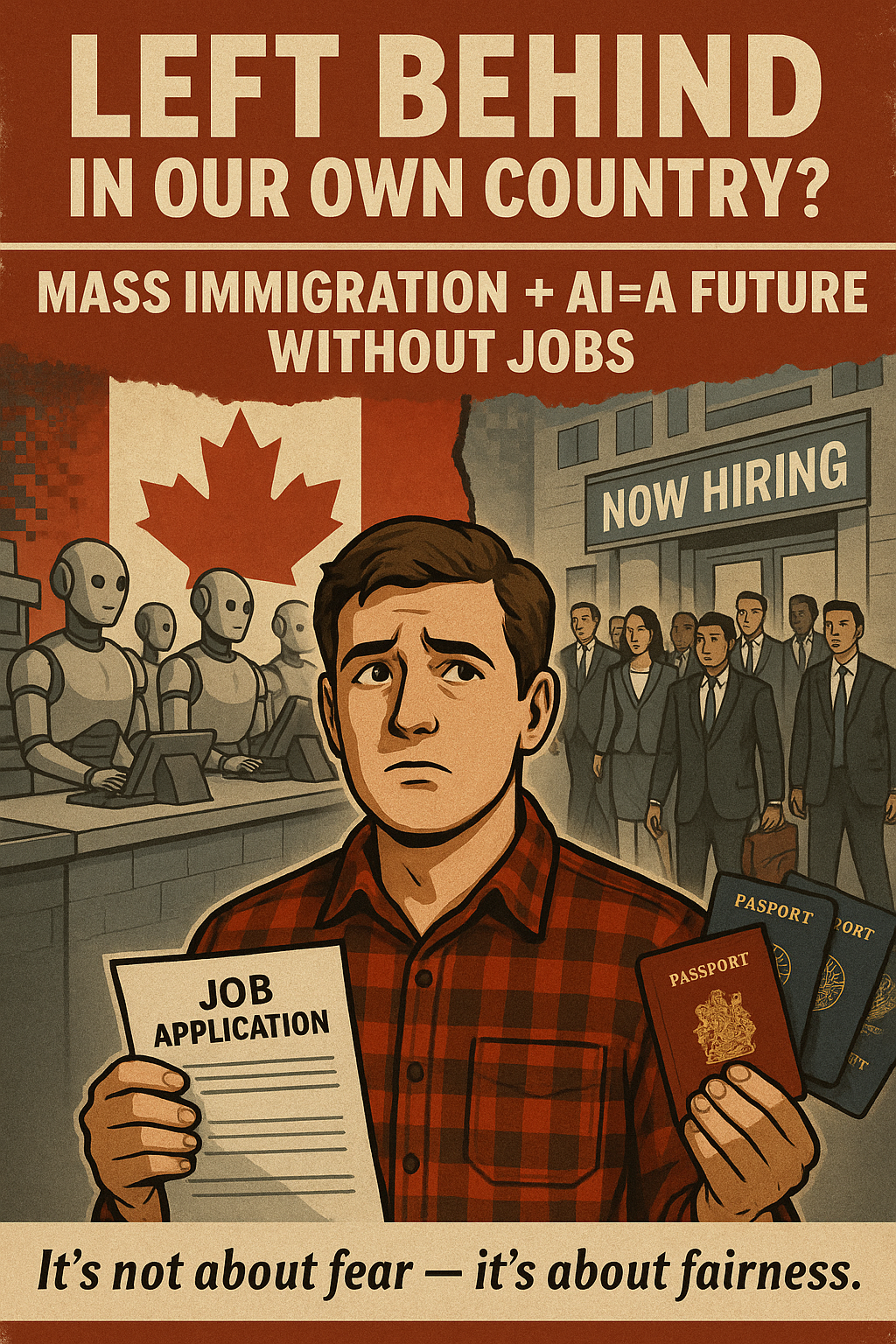
Mass Immigration or Full A.I. Integration: Why Canadians Can’t Afford to Lose Jobs to Both — And What Should Be Done About It
Share
Canada stands at a crossroads. On one side, a steady surge of mass immigration. On the other, the lightning-fast rise of artificial intelligence. Each on its own presents both opportunity and risk. But combined? It’s a storm we’re not ready for — and the average Canadian worker is caught in the middle.
The Double Displacement Dilemma
In 2024, Canada welcomed over 400,000 new immigrants, many of whom were highly educated and ready to take on roles in healthcare, tech, and service industries. At the same time, industries from fast food to finance have ramped up AI integration to reduce costs and increase efficiency. Self-checkouts. AI customer service bots. Driverless delivery vehicles. Chatbots replacing entry-level staff.
Here’s the problem: the same entry-level jobs that once helped immigrants and Canadian-born workers alike climb the economic ladder are disappearing — and fast. And if you’re young, working-class, or without a degree, you're being squeezed out from both ends.
Who Gets Hit the Hardest?
Gen Z & Millennials: Young Canadians already struggling with student debt, high rents, and stagnant wages are losing job opportunities to automation and foreign competition in a saturated labour market.
Rural & Blue-Collar Workers: In small towns across Ontario, Alberta, and the Maritimes, factory closures and service job cuts leave few alternatives. These workers aren't re-skilling into AI fields overnight.
New Immigrants: Ironically, many recent immigrants are also being pushed toward low-wage, high-turnover jobs, putting them in direct competition with struggling Canadians. This isn’t their fault — it's bad policy.
The Government’s Role in the Crisis
Canada’s immigration policy is often shaped more by economic forecasts than by the reality on the ground. We hear buzzwords like “labour shortage,” “productivity,” and “economic growth,” but we don’t hear about the grocery clerk laid off because a robot does inventory now, or the university grad passed over for an entry-level job filled by cheaper labour.
Meanwhile, politicians are pouring money into AI startups and praising automation as a “solution” — without offering real solutions for the people it replaces.
What Needs to Change
1. Rethink Immigration Quotas — Responsibly.
Canada should remain open and welcoming — but also smart and strategic. We need targeted immigration that fills real gaps, not mass inflows that flood sectors already under strain.
2. Tax Automation, Not Labour.
If a company replaces 20 cashiers with machines, they should pay an automation tax that funds retraining programs or universal basic income pilots. Make it more expensive to replace humans than to invest in them.
3. National Reskilling & Trade Expansion.
Invest in trade schools, AI-proof jobs, and local manufacturing. Jobs in healthcare support, plumbing, electricians, and skilled trades remain resilient — and they pay well. We need a national ad campaign promoting these jobs as the new gold rush.
4. Prioritize Canadians First in Entry-Level Hiring.
Require major employers — especially in food service and retail — to hire Canadian citizens and permanent residents first, with exceptions only when skill gaps are clear and documented.
5. AI Ethics & Job Protection Legislation.
Tech shouldn’t run ahead of society. We need firm rules around AI job replacement, privacy, and worker protections. The EU is already setting a precedent. Canada should follow — fast.
Final Word
This isn’t about blaming immigrants. It’s not about banning technology. It’s about protecting Canadian livelihoods, Canadian sovereignty, and our right to meaningful work in a rapidly changing world.
If we don’t act now, we won’t just lose jobs — we’ll lose control over the future of our own country.
